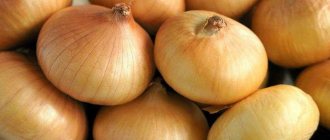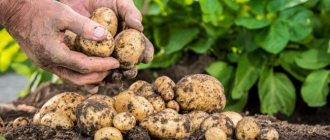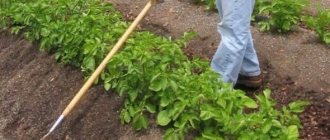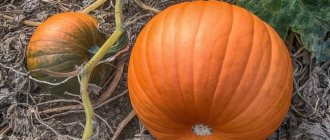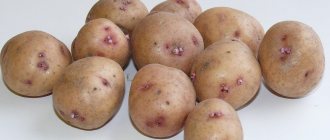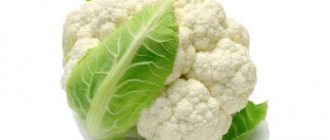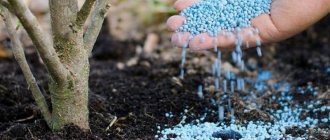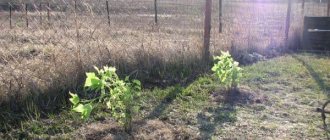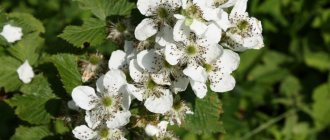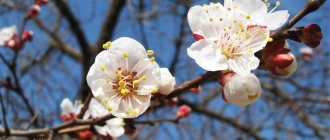What is Chinese Loba?
Definition
Margelan loba is a one-year or two-year fast-growing root crop, one of the high-yielding salad varieties of radish.
Synonymous name: lobo, Chinese radish, green radish.
Appearance and photo
The root crop can be round, oblong, cylindrical . The root crop is most often dark green; there are subvarieties of white, red, and purple colors. The tip is white. It grows up to 10 m-15 cm in length, the diameter of the root crop is up to 8 cm. The skin is smooth. The pulp is juicy, light green or white.
The variety is well stored in winter, retaining its beneficial properties.
The weight of the root crop is up to 300 - 400 g.
Below you can see a photo of Margelanskaya (Chinese) Loba:
Botanical description
Margelan loba (lobo) is a dicotyledonous plant, belongs to the seed varieties of radish (Raphanus sativus) of the Brassicaceae family.
The variety is mid-season . The ripening period of the crop is up to 2 – 3 months.
Biological features
- Fast ripening is the main feature of this variety.
Important! In one summer it can produce two crops in one bed. - Margelan loba is resistant to low temperature conditions and can be planted as early as early May.
- It has special taste qualities close to radishes. The pulp is juicy, crispy, slightly spicy in taste.
- The plant has medicinal properties.
How does it grow?
Grown in Japan, China, Uzbekistan, the Far East and Siberia.
The variety is unpretentious and can grow even on heavy loamy soils . The best harvest can be achieved on fertile soil fertilized with organic fertilizers.
Margelan loba can be sown after legumes, winter grain crops, early potatoes, cucumbers and tomatoes.
Reviews on growing lobo radish
Irina Nikolaevna, 52 years old, Arkhangelsk. I decided to try to grow a new variety, the choice fell on lobo, since according to the description the variety was characterized as unpretentious, resistant to cold and sudden frosts. I can confirm that this is the case; the first time I managed to get a good harvest, which the whole family liked, since radish is also very tasty.
Konstantin Igorevich, 45 years old, Krasnodar. I tried different types of radish - white, black, daikon, but now I also wanted to get acquainted with lobo. The root crops grew in a heap, and the size matched the characteristics. Its taste and spiciness are similar to daikon. In principle, I liked it, I’ll try to grow more.
Hide
Add your review
Despite the fact that the Chinese lobo radish is only gaining popularity in our country, it is an excellent root vegetable that can boast of its nutritional value, taste and benefits for humans, as well as fairly simple cultivation techniques.
Benefit
Margelan radish is a low-calorie product and is recommended to be eaten for weight loss. Nutrients - absorbents contained in the plant are removed from the body :
- Excess liquid.
- Toxins.
- Salts of heavy metals.
- Radionuclides.
The plant contains many substances that promote the formation of food juices, which act as an absorbent.
It has a gentle effect on the digestive system and can be eaten for heart and liver diseases.
It is recommended to eat it to replenish the spring deficiency of vitamins in the body.
We invite you to watch a video about the benefits of daikon radish:
The benefits and harms of daikon
The word "daikon" is translated as "Japanese radish." The vegetable is also called "big root". This name was given to it because of the large size of the fruits. They can reach 40 cm in length and 700 g in weight. The vegetable grows well in temperate climates.
It has a pronounced aroma and mustard taste. The root vegetable is included in the daily diet of the Japanese. It is consumed both fresh and cooked. This demand is due to the following beneficial properties of daikon:
- prevention of respiratory diseases due to phytoncidal properties;
- normalization of the nervous system;
- restoration of thyroid function;
- strengthening hair, nails and teeth;
- whitening property;
- assistance in weight loss;
- improvement of brain activity;
- treatment of skin diseases;
- diuretic and laxative effects on the body;
- strengthening the immune system;
- improving the composition of seminal fluid;
- normalization of urination.
Daikon has a general strengthening effect on the body. First of all, it restores the immune system, replenishing the supply of vitamins and minerals in the body. In folk medicine, it is often used to eliminate hangover syndrome. The root vegetable is able to remove toxic substances from the body resulting from the breakdown of ethyl alcohol. In addition, it stops the inflammatory process and helps cope with infectious diseases. The healing vegetable is often introduced into the diet as part of a therapeutic diet. It helps the body recover faster after suffering serious illnesses or surgery.
For anemia, the product is usually consumed together with carrots and beets. This combination improves well-being and restores iron levels in the body. In some cases, Japanese radish juice is used as an antiparasitic agent. It is often used to prevent helminthiasis. The particular importance of the product is noted in relation to the functioning of the digestive system. It increases the number of beneficial bacteria, which has a positive effect on the food processing process.
The benefits of daikon for the human body are expressed in its rich vitamin composition. But with excessive consumption of the product, even vitamins can be harmful to health. This is due to the high content of fiber and various acids. Due to them, the product has an irritating effect on the mucous membrane of the digestive organs. Stool upset, nausea and abdominal pain may occur.
Treatment
Young leaves and shoots are used to prepare salads, cold soups, and cabbage soup. This helps strengthen the immune system, improve metabolism, and reduce blood cholesterol. The “tops” of the root vegetable are used to prevent constipation.
- The juice of the root vegetable is used for colds and removes mucus from the bronchi. The juice treats diseases of the urinary and gall bladder.
- To prevent the occurrence of fatty liver disease, it is recommended to consume root vegetables raw.
- It has an antiseptic and analgesic effect - crushed root vegetables are used externally as lotions.
- The juice of the root vegetable cleanses the liver and kidneys, dissolves stones, and removes sand from the kidneys.
You will find more information about the chemical composition, benefits, harms and use of Margelan radish for medicinal purposes in this article.
Features of care
After planting, the Loba radish will need time for simple care. If all agricultural technology conditions are met, the likelihood of plant bolting and fruit cracking will be reduced.
So, let's look at the care requirements:
- Thinning. After 2 leaves are formed on the plants, one strong seedling is left in the hole, all the rest are removed.
- Watering. As mentioned above, Loba radish is a moisture-loving plant. Therefore, to avoid bitterness and hardness of the fruits, soil irrigation should be carried out at least 2 times a week.
- Weeding. In order for the plant to receive the required amount of nutrients, weeds must be removed as they appear.
- Feeding. For good development of radish, it is recommended to add nitrogen and mineral fertilizers to the soil. The total number of feedings for the entire growing season should be at least 3 times.
By taking such care of the plant, it will be possible to achieve not only high quality yields, but also prevent the development of diseases.
Varieties and types
| Variety | Characteristic |
| Chinese lady | Hybrid mid-season variety of Chinese radish. The root crop is round and red. The pulp is tender in taste. Used fresh. |
| Ladushka | Early ripening variety. The root crop is elongated, conical, medium size, up to 150 g. The pulp is juicy. Used in summer, the variety is not stored. |
| Mistress | Mid-season variety, ripens up to 2 months. The root crop is medium-sized, weight – 120 g. The pulp is juicy, pale white in color. |
| Glow | A hybrid variety, ripens quickly, within 1.5 - 2 months. The root crop is cylindrical, dark pink in color. The pulp is white, juicy, sweetish in taste. |
| Severyanka | Early variety. The root vegetable is round or slightly elongated, raspberry-pink in color. The variety is suitable for winter storage. |
We reviewed another interesting hybrid variety of Chinese radish, Elephant Tusk, here.
Description and characteristics of culture
In its parameters, lobo is similar to daikon. The main difference between these two varieties is the length of the growing season. Other characteristics of the forehead are as follows:
- the shape of the root crops is round or elongated, cylindrical;
- leaves are entire, dissected into lateral lobes;
- the number of leaves in one rosette can reach 10-15;
- branched stem height – 1 m;
- fetal weight – 500 g and above (there were cases when the fetal weight reached several kilograms);
- color – light and dark green, red, purple, pink;
- the upper part of the root crop is green;
- taste – pleasant, with a slight pungency;
- The pulp is dense and juicy.
Landing
Sowing time
The variety is sown in 2 terms:
- For summer use, the seeds are sown at the end of April.
- For winter storage - in the first ten days of July.
Attention! Failure to comply with sowing dates leads to the formation of inflorescences and cracking of the fruit.
Sowing procedure
- Sow the seeds in a moistened bed 1 - 1.2 m wide in 4 rows.
- The distance between rows is 30 – 40 cm.
- The seeds are distributed in nests (2 - 3 pieces each), buried 1.5 -2 cm.
- The crop is moistened, the temperature is 15-18°C.
- After 7 days, the seedlings are thinned out (a strong seedling is left in the nest).
To speed up seed germination, the crop is covered with film until seedlings emerge.
Radish from China. Loba radish. Conditions for obtaining a good harvest
Radish from China. Loba radish. Conditions for obtaining a good harvest
Loba radish
(lobo) is very popular in many Asian countries. It can also be found in the Far East. But in the middle zone they still know little about it.
Chinese radish tastes softer and more tender than its own
"Slavic sister"
The fruits can be round, oval or cylindrical. The plant itself is quite unpretentious. Seeds germinate
at a temperature of +4...+5 degrees, and for the growth of root crops the optimal values are +18...+20 degrees.
Chinese radish responds to daylight hours. When planting in spring, it often goes straight. In this case, root vegetables are not suitable for food. Therefore, it is better to sow it in the second half of summer, when the days become shorter. For the middle zone this is July, and if the varieties are early ripening
, then the beginning of August.
In the southern regions, Chinese radish can be sown in the first half of September. Loba is demanding of moisture
, especially during the period of root growth, so regular watering is necessary in dry weather. Otherwise, the fruit will become tasteless, the flesh will be bitter and dry.
Conditions for obtaining a good harvest
To obtain a good harvest, fertile soil is required
with a neutral reaction, well seasoned with organic matter. If the soil is light, then add humus or compost (1 bucket/sq.m.). On heavy clay soils, the dose of organic matter is doubled. Fresh manure causes root vegetables to crack and become tasteless. You can also get by with mineral fertilizers: when digging, add 30-40 g of superphosphate and 25-30 g of ammonium nitrate. Kemira-lux or Kemira-station wagon-2 are suitable for this. They contain not only phosphorus, potassium and nitrogen, but also essential microelements. Acidic soils are additionally limed.
Seeds are sown in nests
, 2-3 pieces, in grooves 1.5-2 cm deep, at a distance of about 15 cm from each other. After the emergence of seedlings (after 5-7 days), throughout the entire growing season, the soil is loosened, trying not to damage the roots. When 2-3 true leaves appear, the plantings are thinned out. When thickened, the radish may go into arrows. The leaves should not grow vertically; they should lie on the ground.
By the way, loba produces a higher yield in the beds
than on a flat surface.
Harvest
Harvest root crops in dry weather
, before the onset of frost. On light soils you can simply pull them out by the leaves, on heavy soils you can dig them up with a shovel. Early varieties are harvested selectively as they ripen; winter varieties are harvested all in a row. It is better not to cut the tops, but to tear them off, leaving a petiole of 1.5-2 cm.
Chinese radish is stored in boxes along with potatoes.
. Winter varieties last until spring, retaining all their taste.
FACT: Fruits contain many vitamins, proteins, carbohydrates, and microelements. Loba improves metabolism, stimulates appetite, stimulates the secretion of bile and gastric juice, and also helps remove deposited salts, cholesterol and toxins from the body.
Growing and care in open ground
Weeding
The variety does not tolerate proximity to garden weeds , the root crops become smaller, the leaves begin to wither. Regular weeding is necessary. Yellow leaves that have fallen to the soil should be picked off to prevent pathogens and garden pests. Healthy leaves are also torn off to ensure full access of light to the root crop.
Watering
Chinese radish loves moisture; watering should be plentiful and regular, especially during the period of formation and growth of root crops. In dry weather, the plant is watered every other day, at the root. Loosening
Before growing radishes, be sure to dig the area deeply to make the soil loose and light.
Later, the soil should be loosened regularly , shallowly, so as not to damage the roots.
Fertilizer
- Before planting, it is necessary to feed the soil - compost and humus are added when digging (8 - 10 liters per 1 sq. m.).
On clay soils, the amount of fertilizer is doubled. Important! It is not recommended to apply fresh manure. - Before sowing, you can apply complex mineral fertilizers (“Kemira – luxury”, “Kemira – universal”) containing nitrogen, phosphorus, and potassium.
- During the season, 1–2 fertilizing is carried out, depending on the fertility of the soil. You can use ready-made mineral complexes (“Aelita – vegetable”, “Kemira”), fertilize the plant with wood ash, a weakly concentrated solution of mullein.
- For the full ripening of root crops, potassium fertilizers are mandatory.
Nitrogen fertilizing is stopped 3–4 weeks before harvest.
Hilling
The plant should be hilled regularly so that the tops do not become rough in the open air.
This procedure prevents the appearance of slugs and other pests.
Loba, or Chinese radish, is a valuable source of vitamins and minerals.
Chinese radish with Belarusian registration Every year more and more vegetables from the East are “registered” in our beds. Among them is loba, or Chinese radish. The Republican Unitary Enterprise “Institute of Vegetable Growing of the National Academy of Sciences of Belarus” also became interested in this crop from the cabbage family, where they are developing technology for its cultivation in our country.
alina-semena.ru Loba is a new and very valuable plant for Belarus. It tastes softer and more tender than the radish we are used to, something closer to radish. It has a short growing season (60-70 days or less), as well as high yield. In Japan, China and Korea it is the No. 1 vegetable. They consume up to 35 kilograms (!) of loba per year per capita. This is almost 140 times more than the amount of radishes and radishes that Europeans eat. In addition, Chinese radish is a valuable source of vitamins and minerals, especially in the winter and spring, when the shortage of fresh vegetables is most noticeable. And loba is perfectly preserved until spring.
It's time
Research has shown that the largest harvest of Chinese radish can be obtained by sowing seeds in the third ten days of July. The daylight hours are getting shorter and the nights are getting longer, and this guarantees that the plant will not bloom.
Chinese radish fruits can be round, oval or even cylindrical with white, light green or red skin. But the upper part of the root head is always colored intensely green. The juicy pulp itself is white or light green.
Loba is an unpretentious culture. Seeds germinate at plus 4-5 degrees, but the most favorable temperature for growth is plus 18-20.
Execution place
For Chinese radish, set aside a bed with fertile soil or well-filled with organic matter: 1-1.5 buckets of humus or compost per 1 square meter. m. But not fresh manure - it makes root vegetables crack and become tasteless.
If there is no organic matter, use mineral fertilizers. Add 1 square meter under digging. m 30-40 g of “Superphosphate” and 25-30 g of ammonium nitrate. You can use Kemira-Lux or Kemira-Universal-2 fertilizers, which contain not only phosphorus, potassium and nitrogen, but also essential microelements.
Acidic soils must be deoxidized with slaked lime.
Moisten the bed before sowing. For this eastern guest, narrow-profile ridges are preferable to a flat surface. Then the shoots are more vigorous and the root crops are heavier - 600-800 g each! Seeds are sown in grooves to a depth of 1.5-2 cm, 1-2 pieces in nests located at a distance of 10-12 cm from each other.
After sowing, the surface of the bed can be mulched, and to speed up seed germination, it can also be covered with film.
In approximately 3-5 days, shoots will appear. When 2-3 leaves are formed, the plants must be carefully thinned out, trying not to damage the delicate roots, leaving one of the largest in each nest. Seedlings with a clod of soil can be transplanted into empty rows.
Immediately after emergence, pollinate the crops with wood ash (can be mixed with tobacco). This will protect them from the cruciferous flea beetle, which can completely destroy seedlings in the cotyledon leaf phase.
When the root crop grows to 4-5 cm in diameter, feed the forehead. For early varieties, 1-2 feedings will be required, for late varieties - 3-4 with an interval of 10-12 days.
To prevent the crops from becoming thickened and shaded, constantly remove yellowed leaves, otherwise the loba may bloom and go into arrows. By the way, the leaves of Chinese radish should not grow vertically, but horizontally, as if lying on the ground. It is useful to periodically plant root vegetables - this will protect them from slugs.
news.ru
Remove and save
If all agrotechnical requirements have been met, then within 1.5-2 months after the appearance of friendly shoots, it will be possible to begin harvesting.
Small autumn frosts on the forehead are not terrible, but you should not delay cleaning. It is better not to cut the tops, but to tear them off, leaving a petiole of 1.5-2 cm. In general, the tops should be treated with care, like a crystal vase: no damage during harvesting. Any cuts, bruises or scratches will quickly cause the root crop to rot.
You can store Chinese radish in boxes or in bulk in the cellar, layering it with damp sand to improve preservation. Storing loba in holes and trenches at a depth of 70 cm gives good results.
Winter varieties of loba will keep well in cold cellars until spring. Root vegetables remain as juicy as if they had just been picked from the garden. And at the same time - very useful. Chinese radish improves metabolism, helps intestinal function, stimulates appetite, stimulates the secretion of bile and gastric juice, and also removes various salts, cholesterol, and toxins from the body.
HELP "NG"
Among the most famous varieties of loba are “severyanka”, “raspberry ball”, “beauty of the Moscow region”, “troyandova”, “elephant’s tusk” and others. Of the dozen varieties studied, the best in terms of productivity were “da-qing-pi”, “swan” and “green loba”. Their yield is 2.6-3 kg per 1 sq. m. KEEP IN MIND
Loba is very sensitive to lack of moisture. Regular watering in dry weather is the main condition for the successful growth of Chinese radish and obtaining a good harvest.
Harvest and storage
Harvesting should be done before the first frost.
Early ripening varieties are harvested in dry weather as they ripen, winter varieties are dug up all at once. The harvest should be harvested in the morning, when there is no bright sun .
For storage, stems and leaves must be torn off by twisting (do not cut!). It is necessary to leave a petiole up to 2 cm long. The root crops are placed in boxes and sprinkled with dry sand. You can sprinkle mustard on top of the radish to absorb excess moisture.
Only healthy, fully ripened root crops, without scratches or damage, are suitable for wintering.
The harvest is stored in a dark basement at an air temperature of - 0 + 2 °C . The optimal air humidity for long-term storage is 80 – 90%.
Description of radish
Loba radish is an early ripening vegetable crop. The growing season from sowing seeds to harvesting is 50–70 days. It is worth considering: Loba is not a root vegetable variety. This name is used for several types of radish of Chinese origin.
The shape of Loba fruits depends on the plant variety, they can be:
- round;
- oval;
- cylindrical.
In this case, the skin of root vegetables can be white, green, purple, red. However, their tops always remain intensely green.
The average weight of one radish varies from 0.500 g. up to 1 kg. There have been cases when this figure reached 2 kg.
The taste of Loba radish resembles that of an ordinary radish. Its pulp has a piquant, sweetish-sharp taste and is suitable for fresh consumption, cooking hot dishes, pickling and salting.
Diseases and pests
- Due to lack of moisture in the soil, root crops become coarser and lose their juiciness.
- From an excess of fertilizers and moisture, the fruits crack.
- Slugs and cabbage leaf beetles attack leaves. It is necessary to spray with a solution of Confidor or Actellik.
- Treating the soil and leaves with a solution of liquid soap and actara (1:1) will help get rid of aphids and flea beetles. Spraying must be repeated after 10 - 14 days.
- To prevent diseases, when the first shoots appear, you should sprinkle the bed with ash, tobacco dust, and water with wormwood infusion.
How to give Loba to children?
Loba is a healthy vegetable for children that is gentle on the child’s stomach . Doctors and nutritionists recommend introducing a child to Chinese radish gradually, starting from the age of 5. In its raw form, it is better to add it to a salad with carrots and apples (the vegetables are grated).
Green radish juice, diluted with boiled water, can be given to children from 3 years of age to prevent influenza.
It is not recommended to consume Margelan radish raw for children suffering from allergies, heart disease, kidney disease, or frequent intestinal disorders.
When stewed or steamed, the vegetable does not irritate the stomach ; it can be introduced into the diet from the age of 2 in small portions.
Margelan radish is a natural antibiotic. It is recommended to make warm compresses from the pulp pulp for colds and viral diseases (whooping cough, runny nose, cough).
Important! Compresses are given to children over 3 years of age.
Easy care, unpretentiousness, high yield and long-term storage of Margelan radish allows you to diversify your diet and stock up on essential vitamins from autumn until the end of spring.
Use in cooking
The taste of Chinese radish is very similar to that of radishes. Loba can be used either as an independent dish or added to salads, sandwiches, snacks and okroshka. The boiled vegetable is used as a base for first and second hot courses, and when marinated and salted, loba is an excellent addition to dishes made from various products.
The best allies for the taste of Chinese radish in salads are cucumbers, green apples and carrots. Radish can be cut large or fine, into slices, strips or cubes, and grated. Chinese radish salad will fit perfectly into any diet menu if there are no contraindications to its use. From the following list of ingredients you can prepare a very tasty and healthy salad with a minimum amount of calories:
- half a lemon (its juice);
- pepper mixture;
- salt;
- a bunch of parsley;
- 1 medium radish;
- 1 large carrot;
- 1 medium onion;
- 2 tablespoons of vegetable oil.
Radish and carrots are grated on a coarse grater, onions are cut into thin half rings. A dressing is prepared from the juice of half a lemon, vegetable oil, a mixture of peppers and salt. All ingredients are mixed and seasoned with the resulting dressing, finely chopped greens are added to the salad.
For those who do not like too spicy dishes, the mixture of peppers can be replaced with 1 small chopped bell pepper.
The resulting salad, like all dishes based on Chinese radish, can be eaten both in summer and winter. The rich complex of vitamins and microelements contained in loba will help even those who severely restrict themselves in nutrition to feel great, trying to lose weight. And the prevention of many infectious and viral diseases during the off-season will not be superfluous, and Chinese radish copes with this task perfectly.
Daikon or Japanese bailobo radish is an interesting variety of radish, a root vegetable from the Brassica family. The name translates as “big root”, and in Russian there are many synonyms: “white radish”, “sweet radish”, “white radish”.
The plant was first bred in Japan by ancient breeders who took the Chinese loba root crop as a basis. The taste and nutritional properties helped the product quickly gain recognition and spread to all countries of Europe and the Mediterranean. Since then, every state has considered it its duty to challenge the right to Daikon’s homeland.
The root vegetable looks like a carrot, only white. The size of the plant can be impressive: it sometimes reaches half a meter in length, weighing up to 5 kg.
